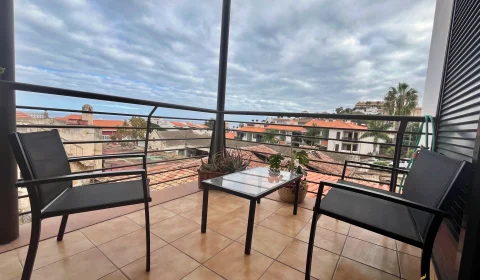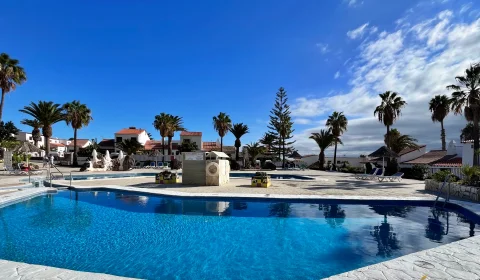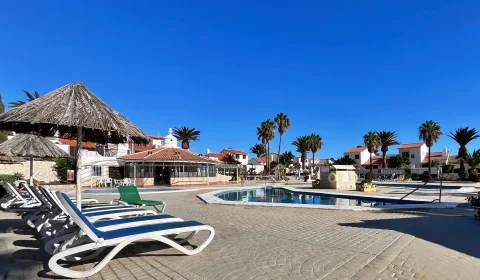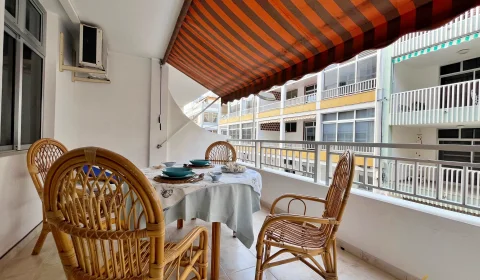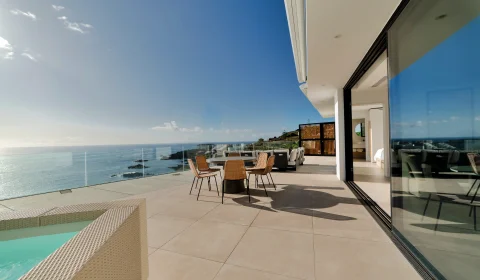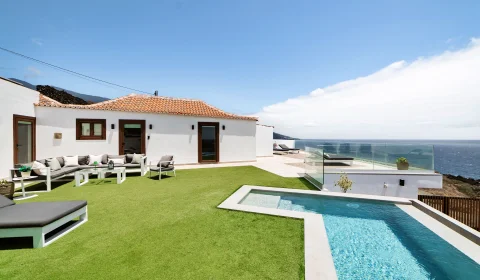Have you ever wondered what the Canary Islands taste like? The Canary Islands are not only known for their breathtaking landscapes, year-round mild climate, and volcanic beaches, but also for their unique cuisine. Shaped by Spanish, African, and Latin American influences, Canarian cuisine offers a variety of flavors, ingredients, and traditional cooking methods that are rarely found on the European mainland.
In this article, we’ll take you on a culinary journey across the Canaries. We’ll introduce you to typical dishes and share some authentic recipes for you to try at home – perfect for foodies and gourmet lovers.
Influences and characteristics of canarian cuisine
Canarian cuisine combines tradition and authenticity. It is simple yet flavorful – heavily influenced by agriculture, fishing, and the isolation of the islands, which led to creative recipe development out of necessity. Influences come from:
Spain: Especially from Andalusia and Galicia.
Africa: The islands are just about 100 km from the African coast.
Latin America: Due to centuries of emigration and return.
Indigenous people (Guanche): Some recipes date back to pre-Spanish times.
Discover holiday accommodations on the Canary Islands
The most famous dishes of the Canaries
Here’s an overview of the classics you shouldn’t miss on any island visit:
Papas arrugadas with Mojo
These small wrinkled potatoes (often the “Papas negras” variety) are cooked in seawater and served with two sauces: Mojo rojo (spicy) and Mojo verde (mild with coriander).
Gofio
Roasted corn or barley flour that is used in many ways – for breakfast, as a side dish, or as dessert.
Ropa vieja
A hearty stew made with chickpeas, meat (usually beef or chicken), potatoes, and vegetables.
Sancocho canario
A traditional fish stew made with salted fish (usually “Cherne”), potatoes, sweet potatoes, and Mojo.
Bienmesabe
A sweet dessert made from almonds, sugar, egg yolk, cinnamon, and lemon zest – often served with ice cream or flan.

Culinary insider tips from island to island
Although Canarian cuisine shares a common foundation, each island has its own specialties – often strongly influenced by local products, climate, and historical factors. If you really want to taste the Canary Islands, you should travel from island to island or at least let yourself be transported there through food.
Tenerife: The culinary heart of the volcanic island
Tenerife is not only the largest of the Canary Islands but also a culinary center. Especially in the north, around La Orotava and Icod de los Vinos, you’ll find many traditional “Guachinches” – simple family-run establishments that serve homemade food and local wine.
Specialties include:
Conejo en Salmorejo – Rabbit in a savory marinade made from vinegar, garlic, paprika, and herbs. This dish is usually braised and served with papas arrugadas.
Queso asado – Grilled goat cheese, often baked or served with Mojo verde and Mojo rojo. A true island classic.
Vino del Norte – White and red wines from Tacoronte-Acentejo or Icod – ideal with fish or cheese.
Tip: In the Anaga mountains, you’ll find small village taverns where you can enjoy gofio soup, goat meat stew, or freshly caught Atlantic fish – straight from the source to your plate.
Gran Canaria: The gourmet island with a rustic heart
Gran Canaria combines the best of both mountains and sea. The capital, Las Palmas, offers modern cuisine, while the island’s interior is known for its down-to-earth, hearty recipes.
Specialties:
Potaje de berros – A hearty watercress stew with potatoes, corn on the cob, and bacon or chorizo. Often served with a spoonful of gofio.
Chorizo de Teror – A soft, spreadable paprika sausage from the village of Teror. Best enjoyed on fresh white bread with olive oil.
Vieja al horno – Parrotfish is a local delicacy, often baked or grilled. Its tender meat makes it a favorite among locals.
Tip: In the cave landscape of Guayadeque, you’ll find restaurants built into natural caves. A rustic dining experience with unique charm.
Lanzarote: Volcanic landscapes, fine wines, and traditional cuisine
The black volcanic soil and dry climate make Lanzarote truly unique – also in terms of food. The island surprises with high-quality wines and creative yet simple dishes.
Specialties:
Lentil stew with vegetables – Hearty yet light, often made with locally grown lentils and carrots.
Goat cheese from Haría or Teguise – Especially creamy and flavorful, often with a paprika crust.
Malvasía wine from La Geria – The vines grow in volcanic soil, protected by small stone walls – a UNESCO-awarded cultivation method.
Tip: A visit to the “Museo del Vino” in El Grifo is worthwhile – you can sample wines and learn more about this unique farming technique.
La Palma: The green island with aromatic cuisine
La Palma, also called “La Isla Bonita,” is known for its fertile soil – coffee, bananas, avocados, and almonds thrive here. The cuisine is hearty with sweet, aromatic undertones.
Specialties:
Almogrote – A type of Canarian cheese spread made from aged hard cheese, garlic, olive oil, and red pepper. Rich and spicy – perfect on toasted bread.
Roast venison or kid – Game is commonly prepared on La Palma, often braised with herbs and red wine.
Dulce de higo – A sweet fig paste enjoyed as dessert or spread on bread.
Tip: The island has small bakeries where you can find fresh bienmesabe tarts and almond pastries with honey – perfect as souvenirs.
Fuerteventura: Simple, honest, and in love with fish
Fuerteventura may be barren, but it boasts the best fresh fish in the Canaries – especially along the west coast, where fishermen sell their catch directly at the harbor.
Specialties:
Goat cheese (Queso Majorero) – Internationally awarded, available in various stages of maturity.
Fried fish with mojo and lime – Straight from the Atlantic to your plate.
Migas con pescado – Fish with toasted breadcrumbs, a simple farmer’s recipe packed with flavor.
Tip: The small fish restaurants in El Cotillo or Ajuy offer fresh catch with breathtaking sea views.
La Gomera and El Hierro: Authentic cuisine without tourist crowds
The smaller islands of La Gomera and El Hierro offer particularly authentic cuisine – here, locals still cook using their grandmothers’ recipes.
Specialties:
Miel de Palma (Palm Honey) – Not actual honey, but a syrup made from the sap of the date palm. Perfect with cheese or pancakes.
Quesadilla herreña (El Hierro) – A sweet cake made with cheese, anise, and cinnamon.
Puchero gomero – A typical stew with whatever the garden, field, and farm have to offer.
Tip: You’ll hardly find tourist restaurants on these islands – here, the "abuelas" (grandmothers) still do the cooking. A must-try!
Every Canary Island has its own unique culinary identity. If you truly want to dive into the local food culture, take your time and embrace the regional specialties – preferably in small restaurants away from the tourist centers. Because it’s in places where the menu is only in Spanish and the house wine is homemade that the true culinary experience of the Canaries begins.

Typical ingredients of Canarian cuisine
Some ingredients appear in many dishes:
Gofio: Versatile and nutritious.
Goat cheese: Often homemade, fresh or aged.
Bananas: Small, sweet, aromatic – ideal for desserts.
Fresh fish: Cherne (wreckfish), vieja (parrotfish), sardines.
Sweet potatoes: Commonly served as a side dish.
Coriander & garlic: Found in almost every variety of mojo sauce.
Traditional recipes to cook at home
Papas arrugadas with Mojo Rojo and Mojo Verde
Ingredients for 4 servings:
1 kg small potatoes
250 g coarse sea salt Water
Mojo Rojo:
3 garlic cloves
1 tsp paprika powder (sweet + hot)
1 dried chili
100 ml olive oil
2 tbsp vinegar
Salt
Mojo Verde:
1 bunch of fresh coriander
2 garlic cloves
100 ml olive oil
1 tbsp vinegar
Salt
Preparation: Boil unpeeled potatoes in salted water until soft. Drain and let dry in the pot over low heat until they become “wrinkled.” Blend the ingredients for each mojo sauce. Serve with the potatoes.
Ropa Vieja
Ingredients:
500 g beef
200 g chickpeas (cooked)
2 onions
1 bell pepper
2 tomatoes
3 garlic cloves
Bay leaf, salt, pepper, oil
Preparation: Cook the beef until tender, let it cool, and shred. Chop vegetables and sauté. Add chickpeas and meat. Season and simmer on low heat for 20 minutes.

Bienmesabe
Ingredients:
200 g ground almonds
200 g sugar
4 egg yolks
1 tsp cinnamon
Zest of 1 lemon
Water
Preparation: Boil sugar with a little water. Add almonds, lemon zest, and cinnamon. Stir in the egg yolks. Heat gently without boiling. Let cool. Perfect with vanilla ice cream.
Gofio escaldado (savory Gofio porridge)
Gofio is not only a staple food but also a specialty with cult status. In this form, it’s served as a savory porridge, e.g., as a side dish to soups or fish.
Ingredients for 4 servings:
150 g gofio (corn or barley)
500 ml vegetable broth or fish stock
2 garlic cloves
1 tsp olive oil
1 tsp vinegar
Salt to taste
Fresh parsley or onion rings for garnish
Preparation: Heat broth in a pot. Place gofio in a bowl. Gradually stir in the hot broth until a smooth, thick mixture forms. Finely chop garlic, mix with oil, vinegar, and some salt. Serve in a bowl and garnish with parsley or onion.
Tip: Tastes great as a dip with bread or as a side to fish.
Sancocho Canario (Canarian fish stew)
A festive dish traditionally served on Good Friday or at family gatherings – simple, hearty, and full of flavor.
Ingredients for 4 servings:
800 g salted fish (e.g., cherne or cod, soaked for 24 hours)
600 g waxy potatoes
400 g sweet potatoes
1 bunch coriander
3 garlic cloves
1 tsp cumin
1 chili pepper (optional)
150 ml olive oil
2 tbsp white wine vinegar
Salt
Preparation: Thoroughly desalinate the fish (soak for at least 24 hours, changing the water several times). Peel and cut potatoes and sweet potatoes into pieces. Boil both in salted water, remove, and keep warm. Poach the fish in the same water for about 10 minutes. For the mojo (e.g., Mojo Verde): Blend coriander, garlic, cumin, chili, vinegar, and oil into a smooth sauce. Serve everything together: potatoes, sweet potatoes, fish, and mojo.
Tip: A spoonful of gofio escaldado and a glass of Malvasía wine make the perfect accompaniment.

Conclusion: A feast for the senses
Canarian cuisine is a reflection of the islands themselves – colorful, diverse, surprising, and honest. Whether it's spicy mojo sauces, traditional stews, or sweet delicacies, the culinary highlights of the Canary Islands invite you to discover, enjoy, and recreate them at home.
So if you're planning your next trip to the Canaries or want to bring a touch of vacation feeling into your home, try one of the recipes – your taste buds will thank you.
Start your culinary journey through the Canary Islands with us!
Would you like to experience the diversity of the Canary Islands not only through their cuisine but also in a truly personal way? Then you're in the right place. We offer individually selected holiday accommodations on all islands – from cozy country houses and stylish apartments to charming fincas and holiday villas with pools.
Whether you're traveling alone, as a couple, with family, or in a group – we’ll help you find the perfect accommodation tailored to your wishes. Our popular island-hopping packages are a favorite, allowing you to combine different regions and culinary highlights with ease.
Car rental offers Canary Islands
Why plan your trip with us?
Your benefits at a glance:
Exclusive selection: Only hand-picked holiday homes, villas & apartments that meet the highest quality standards. We personally know each property!
Direct contact with owners: No anonymous bookings – we are in direct contact with landlords to secure the best prices and conditions for you.
Personal advice: Looking for a place with sea view, private pool, or a unique location? Our experienced team will find the ideal holiday home – individually tailored to your needs.
No hidden costs: Transparent pricing with no booking fees or unexpected extra charges.
Local expertise: As island experts, we provide valuable insider tips on beaches, excursions, and hidden gems you won’t find in any travel guide.
All-around carefree service: From booking to departure, we’re here for you – for a relaxed and worry-free holiday.
Our extra for food lovers: Many of our accommodations come with a fully equipped kitchen – so you can try your hand at Gofio, Mojo & more right away!
Get in touch with us today and benefit from our expertise in selecting the best holiday homes, villas, and apartments on Canary Islands. We will ensure that your vacation becomes an unforgettable experience!
Email:
Phone +34 675 400 700
 DE
DE  EN
EN  ES
ES 


